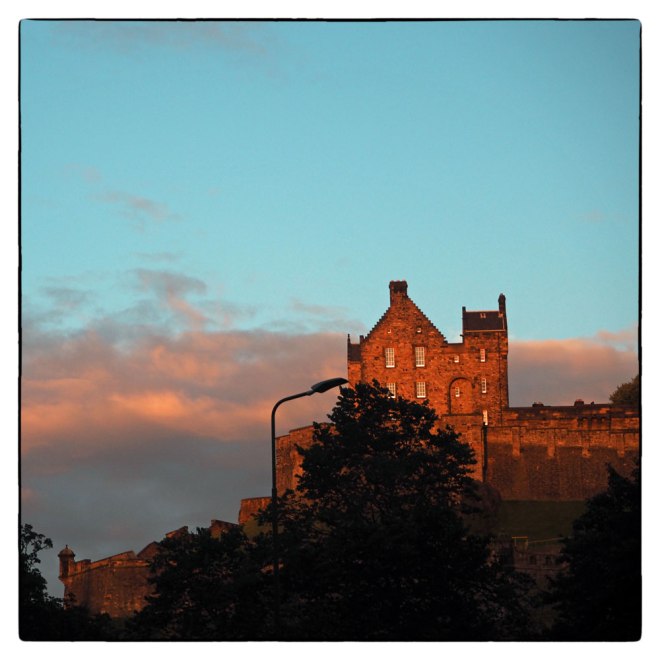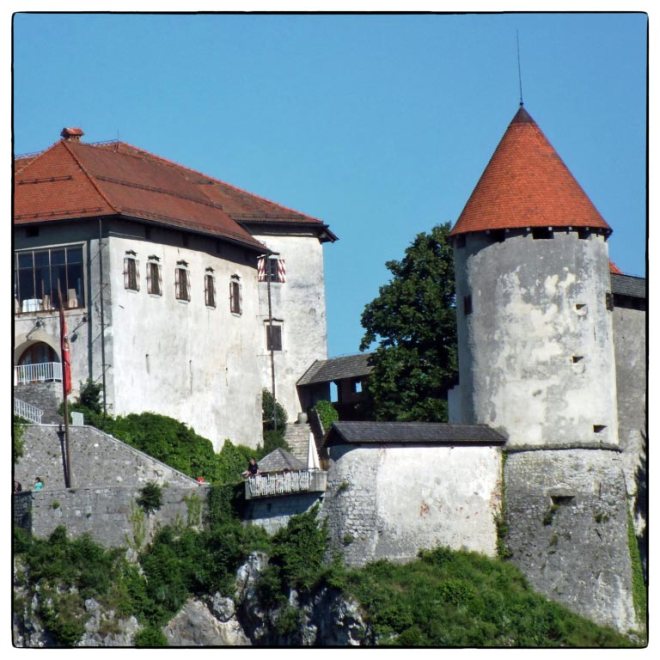If you ever decide to visit Slovenia (and I recommend that you do) then Lake Bled is a must, located in the Julian Alps in the Gorenjska region of Slovenia, not far from the Austrian and Italian borders. The circumference of the lakeside is an easy flat 6km stroll with beautiful views in every direction.

The fairy-tale castle is perched atop a limestone cliff towering 130 metres above the lake and also worth a visit. It’s a steep climb up there, but the views from the top are far reaching.
The castle is an interesting medieval fortress dating back to 1004 and was extended and fortified in the Middle Ages though extensively damaged by an earthquake in 1511. It was rebuilt much the same as we see it today with the castle buildings decorated with the images of coats-of-arms, painted in fresco technique, some are engraved in stone.
The castle was restored between 1951 and 1961 and the Bled Castle Printing Works was integrated in the building for servants at the lower courtyard, and the castle wine cellar has also been added slightly higher.
Nowadays there are exhibitions and cultural events held in the tower gallery and the castle courtyard.
There is a shop, a museum and a restaurant as well as a preserved Gothic chapel in the upper courtyard, dedicated to Bishop St Albuin and St Ingenuin.
It was built in the 16th century; a baroque image was added to it at the end of the 17th century and was decorated with illusionist frescoes.


















